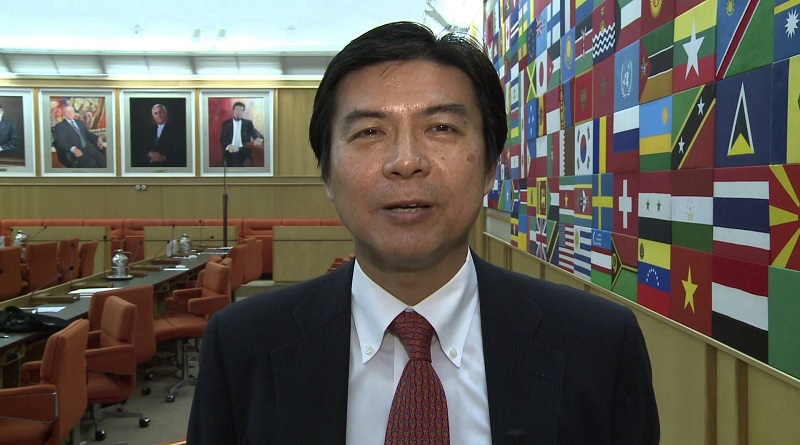Korea, Italy site added to global agricultural heritage list
Traditional ginseng farming in the Republic of Korea and olive tree groves in Italy’s Umbria region have been recognized on the register of Globally Important Agricultural Heritage Systems (GIAHS), managed by the UN Food and Agriculture Organization (FAO). The two sites were added during a meeting of the GIAHS Scientific Advisory Group in Rome this week (2-4 July). It is the first time an Italian site has been recognized, and the fourth site in the Republic of Korea.
The traditional ginseng agricultural system in Geumsan, South Chungcheong Province has been recognized because it relies on a symbiotic relationship between nature and cultivation, and has been in practice for around 1500 years. Farmers use a 15-to-20 year rotation system whereby land is left fallow or used for other crops after harvest, to allow the land’s ‘energy’ to restore. Surrounding forests and rivers contribute to micro climate control, and shade structures using natural materials help mimic conditions for wild ginseng cultivation.
“This is not only about the past, but also about the future,” said FAO’s Yoshihide Endo who coordinates the GIAHS programme. “Becoming a GIAHS site encourages the preservation of these long histories of agricultural practice, but it also recognizes the benefits for future generations in keeping these systems sustainable, promoting knowledge sharing and agrotourism potential and encouraging young people to participate in agriculture.”
The hillsides between the Italian towns of Assisi and Spoleto (including Assisi, Spello, Foligno, Trevi, Campello sull Clitunno and Spoleto), where olives have been grown since the time of the Etruscans, are now one of the main olive production areas in Umbria and Italy. The area has been recognized for the ingenuity through which natural resources and human needs have been combined to create livelihoods and mutually sustainable ecosystems.
Even today, olive groves are cultivated with traditional knowledge and practices including the use of different types of terraces, growing technologies and genetic varieties which have been supported by local communities for many centuries. This area also demonstrates remarkable landscape of olive trees which have been formed by farmers’ long term interaction with nature.
Keeping heritage alive
The GIAHS register highlights unique ways that rural communities have over generations farmed in harmony with nature to create mutually sustainable livelihoods and ecosystems, and often produced remarkable landscapes in the process.
FAO’s selection criteria includes that sites be of global importance, have value as a public good in terms of supporting food and livelihood security, agro-biodiversity, knowledge systems, adapted technologies, and culture, and have outstanding landscapes.
Evidence suggests that GIAHS designation can help conserve valuable elements of the sites while boosting demand and prices for the agricultural products, as well as encouraging tourism and jobs growth.
The two new additions bring the total number of sites on the list to 52 in 21 countries.
Other remarkable landscapes already recognized include Hani rice terraces in China, the Massai pastoral system in Kenya and Tanzania, the Ghout oasis system in Algeria, wasabi production in Japan, Spain’s salt production in Salinas de Añana, Portugal’s agro-sylvo-pastoral system in Barroso, and farmland in Mexico’s Chinampas that relies on oral transmission of traditional farming techniques dating back to the Aztec civilization.
Recent projections also indicate that climate-related loss of reef ecosystem services will total US$500 billion per year or more by 2100, with the greatest impacts felt by people who rely on reefs for day-to-day subsistence. Moreover, despite covering less than 0.1% of the ocean floor, reefs host more than one quarter of all marine fish species, in addition to many other marine animals.
The affected sites include the Great Barrier Reef (Australia), Papahānaumokuākea (USA), the Lagoons of New Caledonia (France) and Aldabra Atoll (Seychelles).
When climate change causes water temperature to rise, corals undergo bleaching as a stress response by expelling the algae (zooxanthellae) living in their tissues. This process turns the coral completely white. Bleached corals are still alive – however, even mild bleaching can result in subsequent deleterious effects, such as reduced growth and reproduction. If stressful conditions persist for several weeks, corals may die from a lack of food or from disease. Coral mortality and subsequent erosion of their skeletons reduce the structural complexity and biodiversity of the reef system.
Widespread coral bleaching was first documented in 1983, but the frequency and severity is increasing. The last three years were the hottest on record, and they caused a global bleaching event that reached 72% of World Heritage-listed reefs.
“We know the frequency and intensity of coral bleaching events will continue to increase as temperatures rise,” said Dr. Scott Heron, NOAA Coral Reef Watch and lead author of the assessment. “Our goal was to document climate impacts on World Heritage-listed coral reefs to date, and examine what the future may hold. The fate of these treasures matters to all humankind, and nations around the world are bound by the 1972 World Heritage Convention to support their survival.”
Coral communities typically take 15 to 25 years to recover from mass bleaching. The assessment looked at the frequency with which World Heritage reefs have been subjected to stress that exceeds best-case rates of recovery. The assessment was developed with satellite data from the United States National Ocean and Atmospheric Administration’s (NOAA) Coral Reef Watch and received the support from the French Agency for Biodiversity (Agence Française pour la Biodiversité).




